Hot meals and bomb shelters: In Ukraine, wartime school meals offer nourishment and security
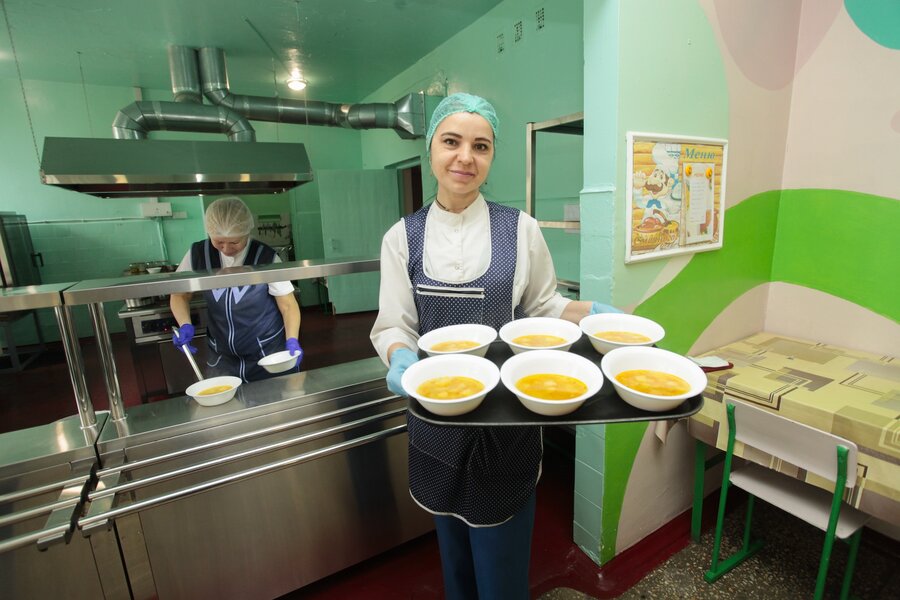
It’s 10:15 am in Velyka Mykhailivka, in the Odesa region of Ukraine, and around 100 young faces aged six to ten are lining up in the school canteen to receive their daily meal. The smell of pea soup wafting from the kitchen makes it hard to stay still and respect teachers’ orders to wash hands before sitting down.
Over the past week, this village has witnessed seven air raid alarms lasting nearly eight hours in total. The surrounding area borders the sea, which is constantly contested. Port infrastructure has been repeatedly targeted by missiles, while attacks on cities and villages are also very common.
Residents take the air raid alerts seriously. Each time they sound means rockets or drones carrying explosive charges are approaching.
Despite the danger, approximately 6,000 people reside in the village. This lyceum is one of 700 schools supported by the World Food Programme’s (WFP) school feeding programme, which helps provide daily nutritious meals to 100,000 children in Ukraine.
Besides the pea soup, today’s school menu offers pasta with meat. The children also receive compote (a drink made from fresh or frozen fruits or berries) and bananas.
Hard to explain
One meal at this school this year would have cost US$1.29 (50 hryvnias) per day. So a month of meals for one child would have cost approximately US$26 (the minimum salary in Ukraine is US$185).
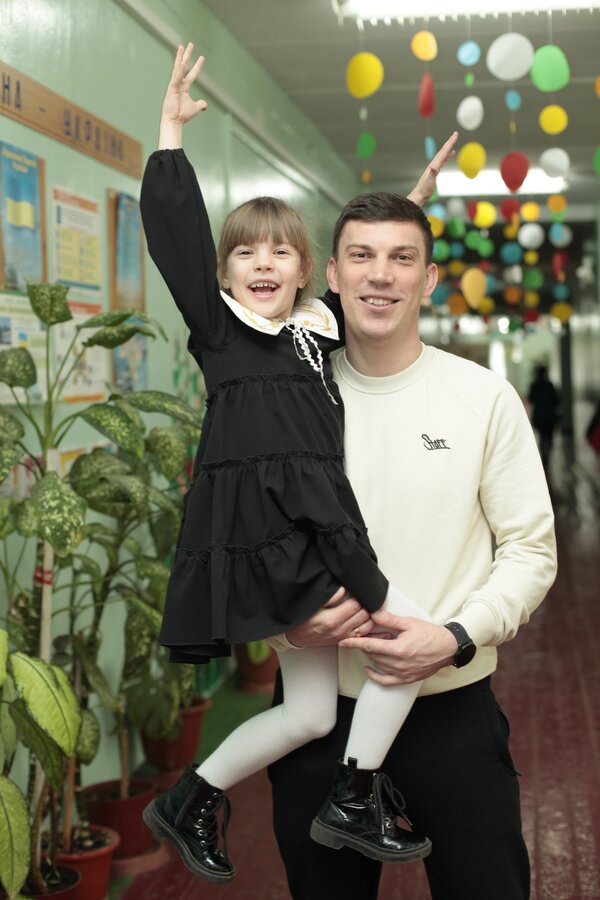
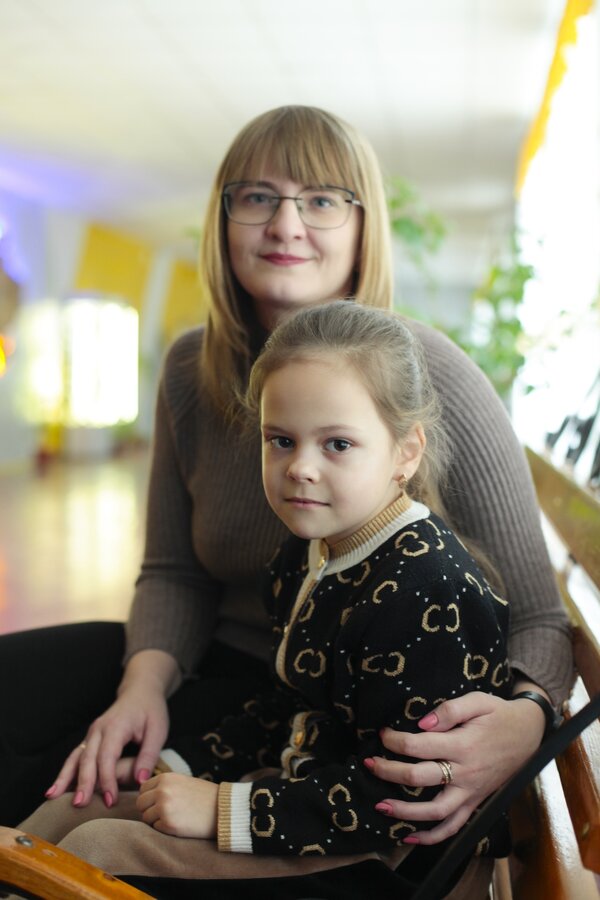
“It’s hard to explain to little children why someone goes to lunch and someone doesn’t,” says maths teacher Natalia Kravchenko, the school’s principal.
“This especially applies to children from disadvantaged or poor families … whose parents cannot afford to pay for meals”.
“So we’re very glad that our school participates in the World Food Programme’s school feeding initiative.”
Kravchenko has been managing this school for 18 years. In 1977, she entered the first grade as the school had just opened.
Pea soup
Her main goal as during the war has been to maintain as normal a life as can be for the children.
During air alarms, the students are taken to a shelter in the school’s basement. But the basement cannot accommodate all students at once, so Kravchenko decided to split classes into two shifts to keep everyone safe – elementary starts at 8 a.m. and high school students at 11:30 a.m.
The latter are divided into two groups, alternating between in-person and remote learning every week.
Maria, a first-grader, has already finished her pea soup – her favorite dish – while Dasha, her classmate, tells us she prefers the pasta.
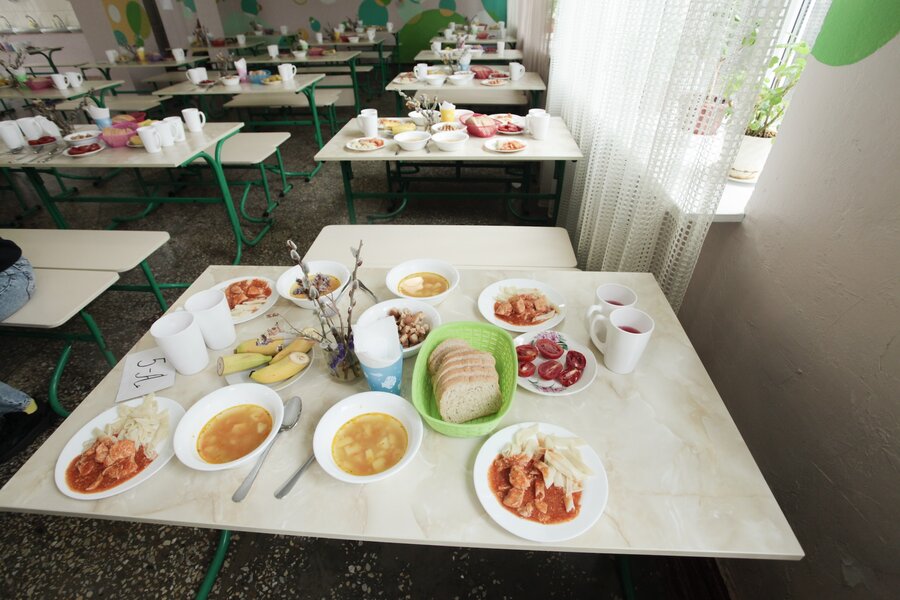
Roman, Maria’s father, works as a sports coach at the school. Finding jobs in the village is tough. There are few businesses or enterprises – or plans for any – because of the uncertainty of the war and regular air raids. So most job opportunities are found in public institutions like schools, hospitals, and the village council.
“Both my wife and I have jobs,” he says – Maria’s mum, Yaroslava, works at another school.
“But we are the lucky ones,” adds Roman. “There are children whose parents cannot afford to buy them a banana, an orange, or an apple.”
Delicious cutlets
Dasha’s mother, Oksana, says: “My younger daughter has to get up for school at 6:30 a.m., and at that time, it’s hard to feed a six-year-old. And because of the war and the changing schedule, it’s difficult to find enough time to prepare food. One child is in elementary school, the other in high school, and I also have a job.
Sometimes, I come home and I ask her, ‘Dasha, will you eat?’ and she says, ‘No, I already ate at school, they have such delicious cutlets and fish there!’ And I understand that my child is eating healthy food at school, while I’m saving a significant portion of the family budget.”
The WFP school meals programme covers 30 percent of the cost of daily hot meals for children in grades 1-4. This helps to ease the financial burden on parents, especially those who are barely scraping by.
In February, thanks to the support from WFP, a hot meal at this school cost only 0.16 hryvnia’s to the children’s families. That’s US$0.004. With cheaper lunches, 125 pupils are now eating at the canteen, compared to 90 at the start of the year.
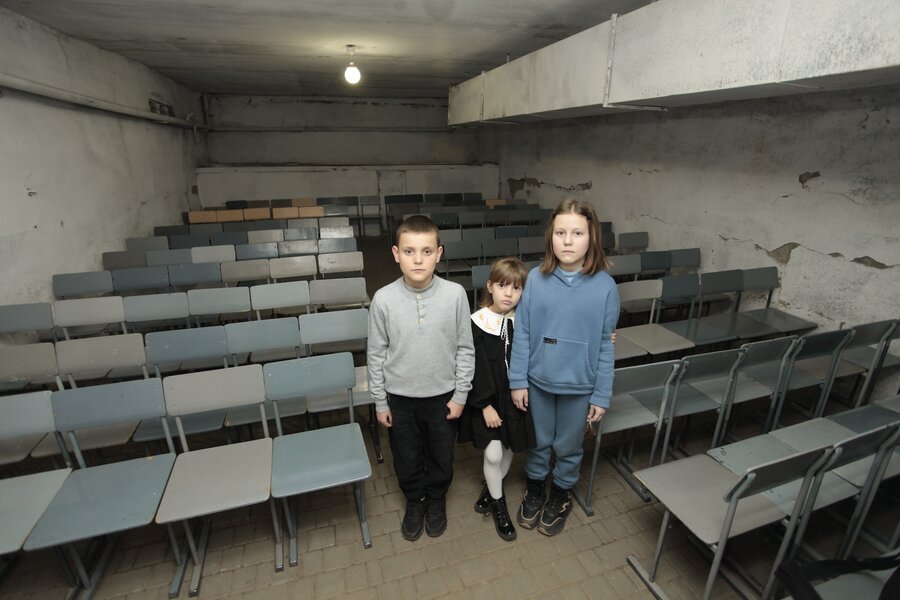
The daily meals also bring a much-needed sense of routine, stability, and normalcy in a time of war. Many of the children attending this school and their families were displaced by the fighting and are rebuilding lives here that could again fall apart at a moment’s notice.
“If it weren't for the war, we would already be planning for a second child,” says Maria's father, Roman. “But the situation here is complex. With Russian-occupied Transnistria just 30km away, fighting could erupt at any moment. So, my car is always fuelled and our belongings are packed, just in case we need to flee.”
Initial funding for WFP school feeding in Ukraine was provided by the French government and by Mastercard, WFP’s partner of 12 years.
Mastercard, together with its customers and cardholders, has supported WFP’s efforts to provide school meals to vulnerable communities worldwide and their early funding for school feeding in Ukraine has helped ensure that children like Dasha can receive a daily hot meal.
